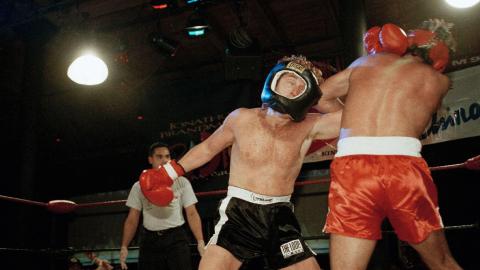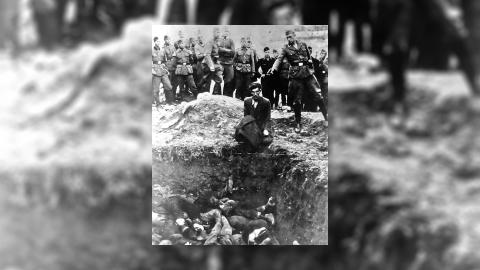Why Friday the 13th was the unluckiest day for the Templars
Friday the 13th of October, 1307
The date on which the Templars were rounded up in France has gone down in infamy: Friday the 13th of October, 1307. Some even believe this is the reason Friday the 13th is considered unlucky.
How did it come to this? How could one of the most powerful organisations on the planet – wealthy, pious, synonymous with Christian might in the Holy Land – be brought so low? Well, part of it was down to the changing times.
The Templars had been founded to protect Christian pilgrims to the east, eventually evolving to become an elite fighting force in the Holy Land. So, as the Crusades came to an end in the years following the Siege of Acre in 1291, the order’s ostensible reason for existing was extinguished.
Of course, they were far more than just soldiers by this point, owning vast swathes of property and acting as bankers throughout Europe. One man heavily in debt to the order was Philip IV of France, and it’s speculated that he wanted to bring down the Templars to save himself from having to pay up, AND to get his hands on their treasures.
Was Philip solely motivated by greed, or did he also genuinely believe the Templars were secret heretics? It’s a hard one to work out. Rumours about the order had been circulating for a while, as Templar Grand Master Jacques de Molay had actually asked Pope Clement V to set up an inquiry to dispel these ‘strange and unheard-of things’, in Clement’s words.
Giovanni Villani, an Italian chronicler of the time, wrote about a certain rogue Templar, a ‘man of evil life and a heretic’, who’d ‘evilly and maliciously’ spread stories about the order ‘in hope of gain, and of being set free from prison by aid of the king.’ Meanwhile, Templar historian Charles Greenstreet Addison pinpoints a criminal named Squin de Florian as the source of ‘dark rumours and odious reports concerning the Templars’.
The Templars were immediately subjected to excruciating torture...
Whatever the origin of the rumours, Philip seized on them to justify a merciless assault on the entire order. On Thursday the 12th of October 1307, Templar Grand Master Jacques de Molay had the honour of being the pallbearer at the funeral of the king’s sister-in-law. The very next morning, he was arrested on the orders of that same king, along with droves of other Templars throughout France. While some tried to escape (one knight, Pierre de Boucle, discarded his Templar clothes and shaved his beard in a futile attempt to blend in with civilians), the men were largely taken by surprise and instantly submitted to the authorities. Perhaps they assumed it was all a misunderstanding. After all these years of power and prestige, they couldn’t possibly have fathomed the immensity of the contempt and violence about to be unleashed upon them.
The Templars were immediately subjected to excruciating torture. Weights were hung from their genitals; some had their arms tethered behind them and suspended from the ceiling until their shoulders were dislocated. One luckless knight, Bernarde de Vado, had his feet slathered in fat and held over open flames so they literally cooked. As he later reported to an agent of the church, ‘they held me so long before a fierce fire that the flesh was burnt off my heels. Two pieces of bone came away, which I present to you.’
Many Templars died during the interrogations. Interestingly, one medieval source suggests that ‘those whom the investigators have killed in torture they secretly bury… out of fear that such horrible and savage deeds should reach royal ears’. This suggests Philip IV really did believe the Templars were guilty and confessed to heresy freely, rather than because they were subjected to unendurable agony.
Confess they did. Even Jacques de Molay admitted to denying Christ during the Templar initiation ceremony and spitting in the direction of the cross. The truth behind tales of heretical rituals and the worship of a mysterious deity known as ‘Baphomet’ is still a matter of controversy. However, most scholars believe Christ denial was a part of the initiation, but only as a kind of training in case the knights were captured by Muslims and made to renounce their faith.
It’s telling that many Templars later retracted their confessions when they were questioned by Catholic investigators acting for the Pope. Indeed, the Chinon Parchment, a long-lost document found in the Vatican Secret Archives in 2001, shows that less than a year after the arrests, the Catholic Church officially absolved Jacques de Molay of any heresy. But such displays of rational thinking wouldn’t be enough to save the order.
The powerplay between the Pope and Philip IV, with the imprisoned Templars caught in the middle, dragged on for years. In 1310, dozens of Templars who’d retracted their confessions were burnt at the stake as relapsed heretics.
Outside of France, the Templars were generally not tortured and were in some cases protected by faithful monarchs. In England, they had a powerful supporter in Edward II, who described the accusations of heresy as being ‘more than it is possible to believe’. That said, a number of English Templars were subjected to fierce questioning and extradited to be imprisoned in France, while over in Germany some Templars were burnt at the stake. In Portugal, the king protected the Templars and the order was eventually reconstituted as the Military Order of Christ.
But, while the Templars suffered differently depending on their location, the organisation was doomed. In March 1312, the Pope issued a Papal bull dissolving the Order of the Temple, with their assets to be given over to the Knights Hospitaller.
In a sense, the Templars were victims of their own success. If they hadn’t been such a lucrative target, they might have survived for far longer, evolving over time like the Order of St Lazarus. Instead, they were destroyed by their powerful enemies.
Jacques de Molay was burnt alive in 1314 after languishing in prison for years as the convoluted trials of the Templars unfolded. It’s said that he issued a final curse as the flames licked at his body, promising a ‘calamity’ for those who had annihilated his order. Pope Clement died the very next month, while Philip IV, nemesis of the Templars, died unexpectedly from a stroke before the year was out. Their fates provide an eerie epilogue to the downfall of the Knights Templar.
















